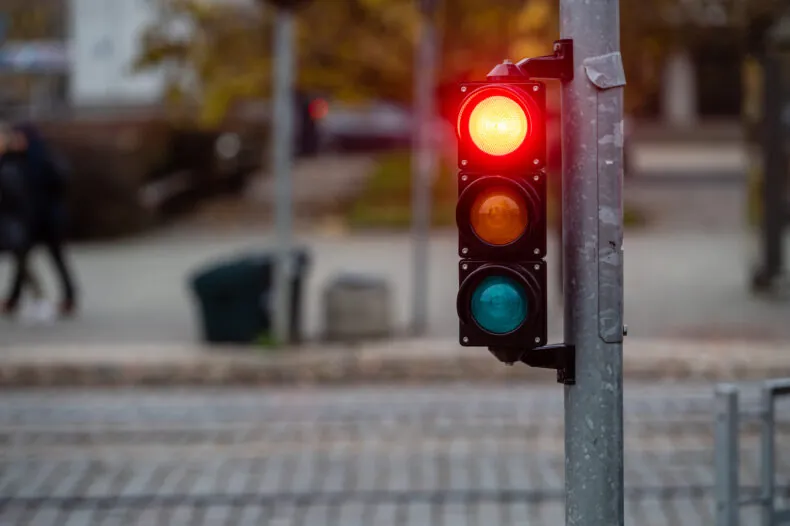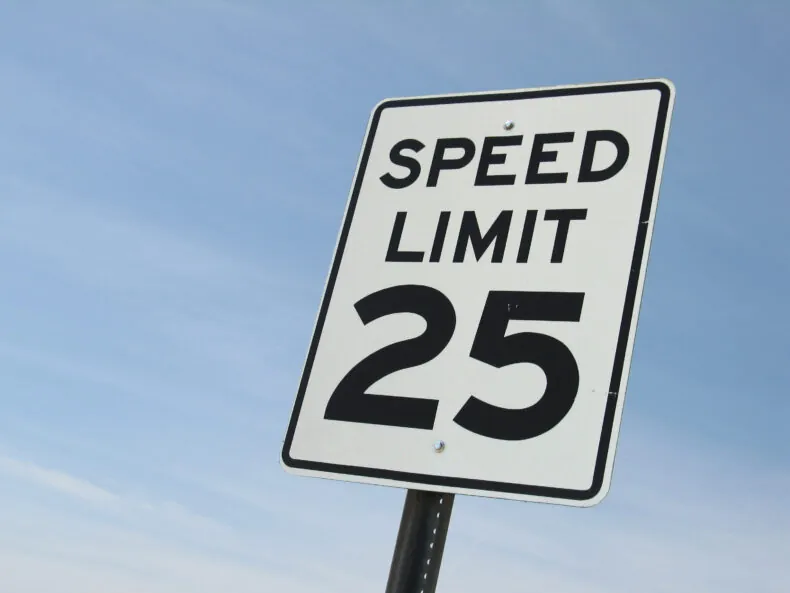The circumstances surrounding a left-turn accident can be complex and determining fault is crucial for an insurance claim. Understanding the factors that contribute to these kinds of accidents is essential in seeking compensation for damages. In this blog, we will go over several aspects that need to be considered to establish fault in left-turn accidents.
Why Are Left-Hand Turns Dangerous?
Left-hand turns on a yield are statistically more dangerous than right-hand turns for several reasons. These turns involve crossing one or more lanes of oncoming traffic, which significantly increases the risk of collisions.
A left-turn driver needs to assess the speed and distance of oncoming vehicles from multiple lanes of traffic. This can lead to errors in judgment and timing. Additionally, limited visibility due to parked cars or other vehicles can make it challenging to accurately judge when it’s safe to turn.
Left turns often coincide with pedestrian crossings, adding another layer of complexity. Drivers need to be aware of both pedestrians and oncoming vehicles, increasing the chances of distractions and misjudgments. Accidents involving pedestrians and vehicles turning left vary from 17-32% of all pedestrian accidents at the intersection.
What To Do If You’ve Been In A Left-Turn Collision
Being involved in a left-turn car accident can be a stressful experience. Here’s what you should do if you find yourself in this situation:
Call the Police
Check yourself, your passengers, and others involved in the accident for injuries. Contact the police and get a copy of the police report. Even if the accident seems minor, a police report is invaluable evidence that can help support your claim.
Exchange Information
Exchange contact information, insurance details, and driver’s license information with the other party involved in the accident. Also, gather contact information from any witnesses present at the scene. Ask the witnesses if they are willing to give their account of how the accident occurred.
Document the Scene
Take pictures of the accident scene, including vehicle damages, skid marks, and street signs. Also, ensure you take photos of your injuries. These photos can serve as valuable evidence later.
Seek Medical Attention
It’s crucial to get a medical evaluation, even if you don’t feel injured immediately after the accident. Some injuries, like whiplash, might not manifest symptoms until hours or days later.
Contact a Car Accident Lawyer
The other driver’s insurance company may reach out after the accident and ask you for a statement. It’s best to avoid discussing the accident details and your injuries with the insurance companies. An experienced personal injury attorney will facilitate communication with the insurance companies on your behalf, protect your rights, and help you gather compelling evidence.
Proving Fault in Left-Turn Car Accidents
Gathering strong evidence can significantly impact the outcome of your case. Here are ways to prove car accident fault in left-turn collisions:
Eyewitness accounts – Eyewitness testimonies can provide valuable insights into the accident. If there were witnesses, ask for their contact information and request a statement regarding what they saw.
Traffic camera footage – If the accident occurred at an intersection monitored by traffic cameras, obtaining the footage can provide clear evidence of the events that led up to the collision.
Skid marks and vehicle damage – Examining skid marks and the damage to the vehicles can help accident reconstruction experts determine the speed and trajectory of the vehicles involved, supporting your version of events.
Cell phone records – If the other driver is suspected of texting at the time of the accident, an experienced car accident lawyer can subpoena the distracted driver’s cell phone provider for cell phone records. Obtaining these records may reveal whether the other driver was using their phone at the time of the accident.
Expert testimonies – Accident reconstruction experts can testify about the dynamics of the accident, providing a professional opinion on how the collision occurred and who was at fault.
Is the Car Making a Left Turn Always at Fault in California?
In California, as in many other states, the driver making a left turn is often presumed to be at fault in an accident. However, this is not an absolute rule, and liability can shift based on the specific circumstances of the accident.
According to the California Vehicle Code 22100 (B), drivers making a left-hand turn must not turn before entering the intersection. In addition, the left-hand driver must yield the right of way to oncoming vehicles.
California follows the doctrine of comparative negligence, meaning that both parties involved in an accident can share the fault to varying degrees. If the oncoming driver was also negligent, their degree of fault will be considered when determining liability and damages.
There are situations where the left-turning driver might not be entirely at fault. For example, if the oncoming driver was speeding significantly or ran a red light, they could be held liable or share the fault.
The Responsibility of the Left-Turning Driver
Drivers making left turns on a green light have a responsibility to ensure they can complete the turn safely without interfering with oncoming traffic. Failing to do so can lead to accidents and legal consequences. Here’s what the responsibility of the left-turning vehicle entails:
- Yielding to oncoming traffic – This means waiting for a safe gap in oncoming vehicles and ensuring there is enough time to complete the turn without causing a hazard.
- Using turn signals – Proper use of turn signals is essential to communicate intentions to other drivers.
- Exercising caution – Left-turning drivers should scan the intersection for pedestrians, bicyclists, and other vehicles before starting to turn.
Factors that May Shift Liability
Left-turn accidents are a common occurrence in California. These kinds of accidents can often lead to confusion about who is at fault. In general, the driver making the left-hand turn is typically considered at fault, but some exceptions and nuances can shift the liability. Here are some key points to consider when determining fault in left-turn accidents:
Reckless Driving
If the oncoming driver was engaging in reckless behavior such as running a red light or overtaking other vehicles illegally, they could be held partially or fully responsible for the accident. If the left-turning driver disregards a red traffic signal or stop sign, they are almost always at fault. The left-turning driver must yield to vehicles approaching in the opposite direction.
Speeding
If the oncoming vehicle was speeding, the driver turning left might have misjudged the distance and speed, leading to the accident. Speeding might shift some liability to the driver of the oncoming vehicle. In such cases, both drivers might share the fault to some extent.
Visibility Issues
If there were obstructions like parked cars, trees, or other obstacles blocking the left-turning driver’s view, it could affect their ability to judge the oncoming traffic. However, this does not completely absolve them of responsibility. Drivers are expected to make turns only when it is safe to do so.
Distracted Driving
If either driver involved in the accident was distracted, such as texting or talking on the phone, their distraction could contribute to the collision. Distracted driving is a form of negligence and can impact liability.
Faulty Traffic Signals
Malfunctioning traffic signals or unclear road signage can create confusion for drivers. If a left-turning driver followed faulty signals or ambiguous signs, the responsibility for the accident might be shared with the local authorities responsible for maintaining road infrastructure.
Comparative Fault and Shared Liability
In California, comparative fault applies when determining liability in accidents. Comparative fault means that both parties involved in an accident can share the responsibility for the collision.
In cases of shared liability, each party’s degree of fault is determined as a percentage. For example, if the left-turning driver is found liable for 75% of the damages, and the oncoming driver is found 25% at fault, the damages awarded will reflect this division.
The percentage of fault assigned to each party directly affects the compensation they receive. If you were partially at fault for the accident, your compensation will be reduced by your percentage of fault. For instance, if your total damages amount to $100,000 but you were 25% at fault, you would receive $75,000.
How to Win a Left Turn Accident Lawsuit
Winning a left-turn accident lawsuit requires a strong legal strategy and compelling evidence to support your claim. If you believe you were not at fault for the accident, here are steps to increase your chances of winning a left turn accident lawsuit:
- Collect as much evidence as possible, including photographs of the accident scene, vehicle damages, skid marks, and any relevant road signs or signals.
- Obtain a copy of the police report. This report often includes details about the accident, statements from involved parties and witnesses, and the officer’s assessment of the situation.
- Seek legal representation from an experienced car accident attorney. A skilled attorney can assess the circumstances, gather additional evidence if necessary, and build a strong case on your behalf.
- Personal injury lawyers have connections with expert witnesses including accident reconstruction specialists. These professionals recreate the accident and provide expert testimony to help strengthen your case.
- If you sustained injuries in the accident, maintain thorough medical records detailing your injuries and treatments.
How a Lawyer Can Help You Determine Who Is at Fault in Your Left Turn Accident Case
Navigating the legal complexities of a left-turn accident case can be overwhelming, especially when trying to determine liability and seek compensation for damages.
Car accident attorneys can analyze the details of your case, identify relevant laws, and apply legal precedents to build a strong argument. Attorneys have the resources and networks to conduct thorough investigations. They can gather evidence, interview witnesses, obtain accident reports, and collaborate with accident reconstruction experts to establish the sequence of events leading to the collision.
Contact an Experienced Car Accident Attorney Today
If you find yourself in a left-turn accident, remember to document the accident scene, exchange information, seek medical attention, and consult an experienced car accident attorney. At Alpha Accident Lawyers, we are committed to helping accident victims recover full and fair compensation for their losses. Our award-winning law firm maintains a 99% success rate and has recovered millions of dollars in compensation for our clients.
If you have questions or require specific legal advice related to your situation, it’s crucial to consult with a qualified personal injury attorney. Call us today to schedule a free, no-risk consultation.
START YOUR FREE CONSULTATION






